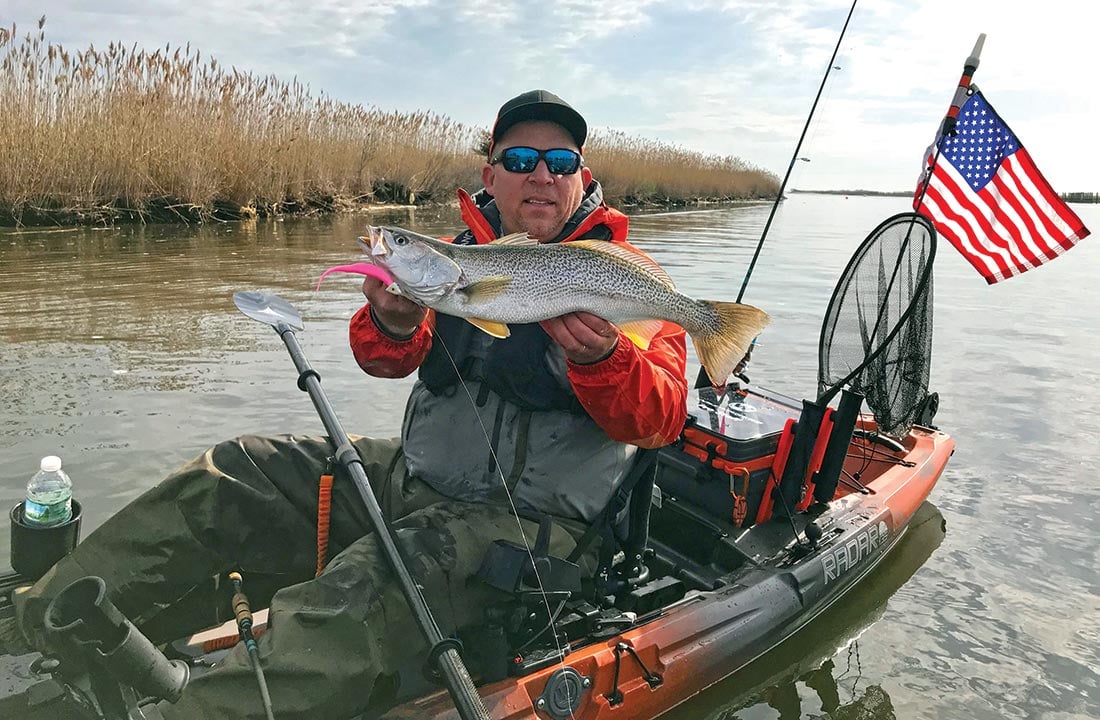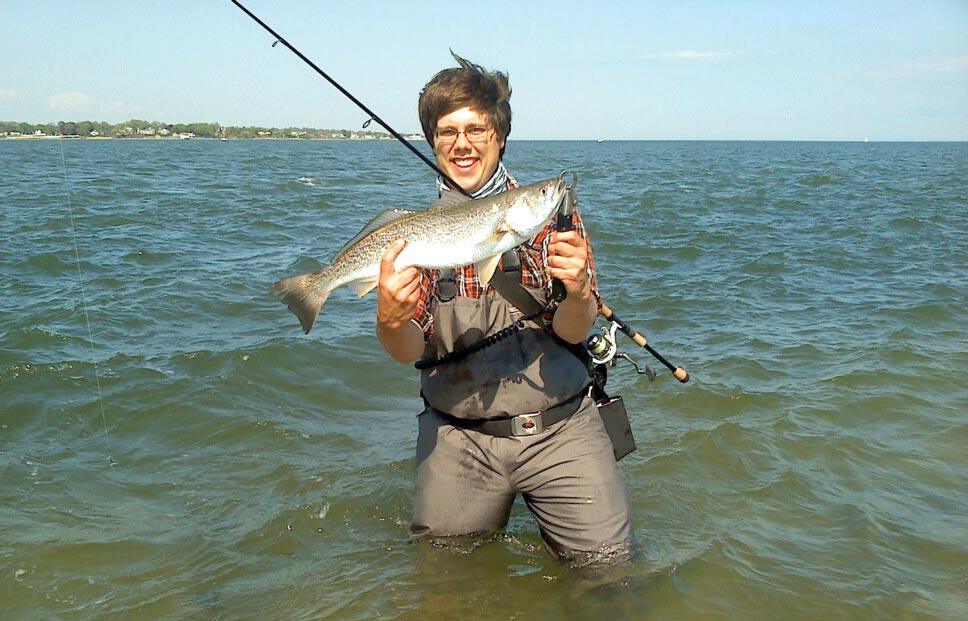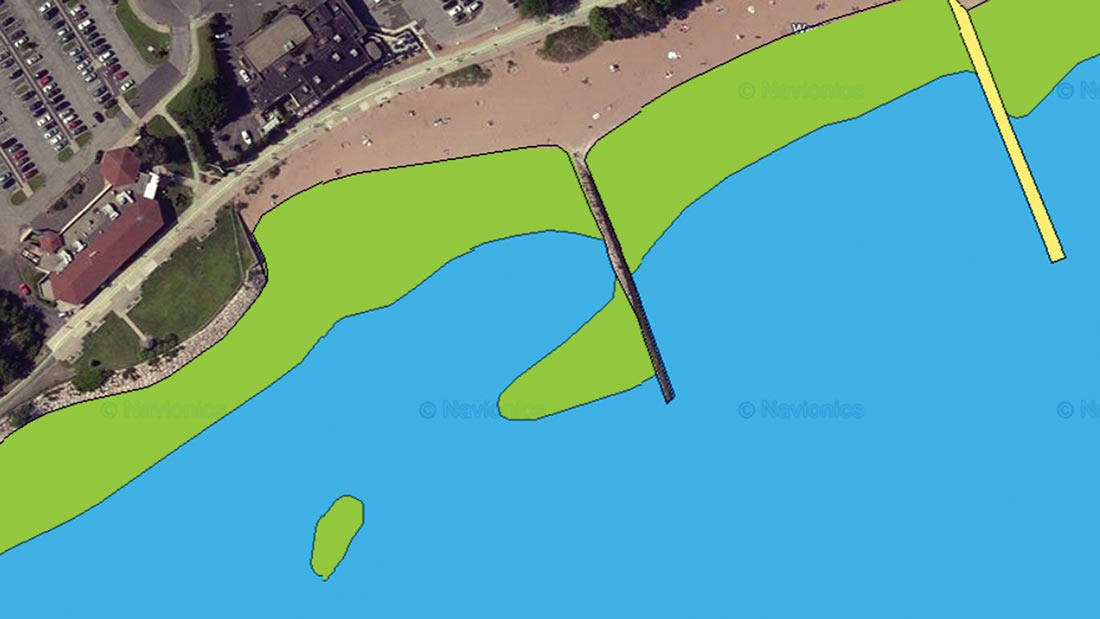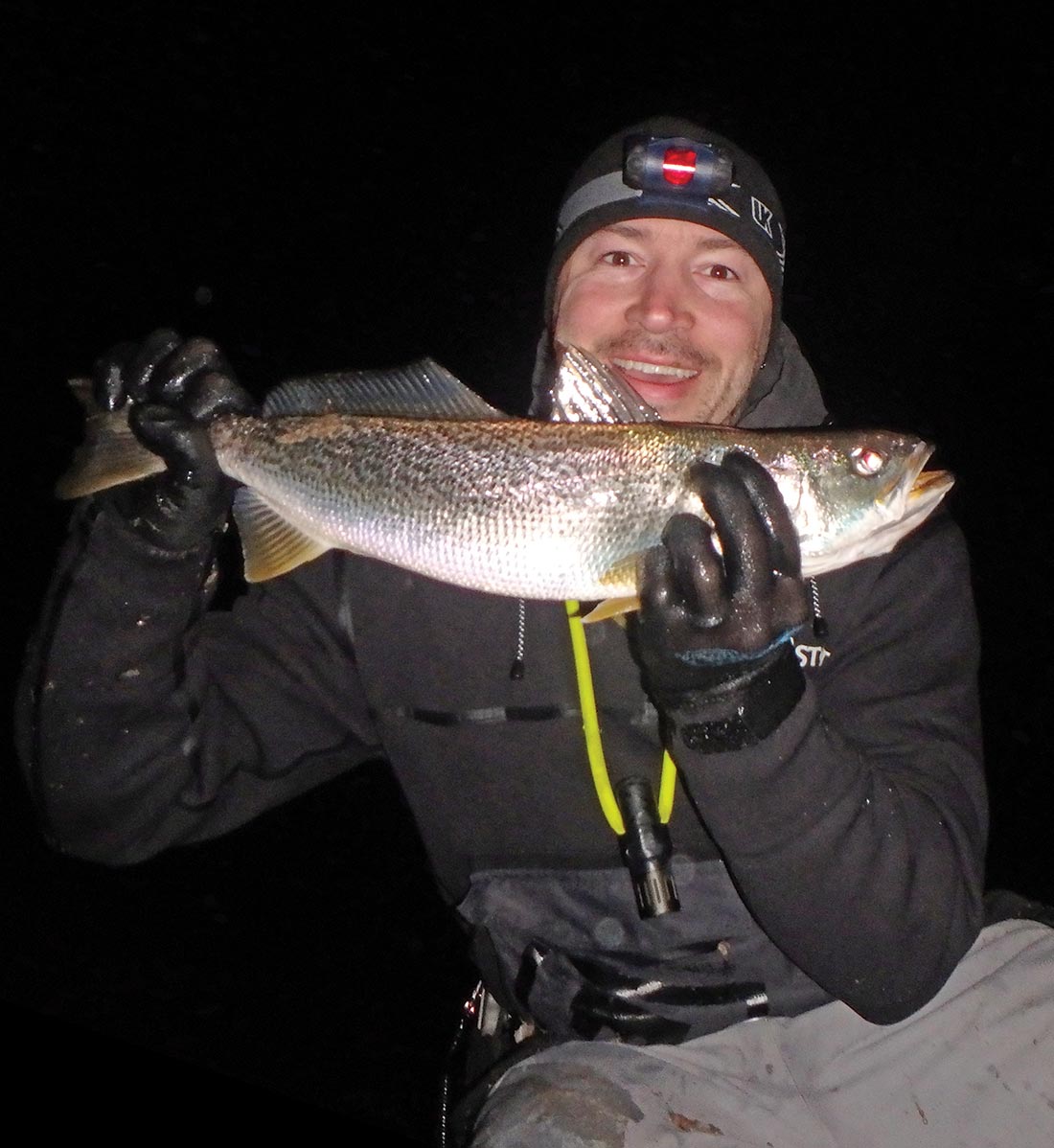
Take your weakfish tactics to the next level this spring and dial-in a tiderunner bite of your own.
As I made my way out onto the bar, the sound of crunching shells under my boots was suddenly interrupted by the shrill call of a startled oyster catcher. A few moments later, as I neared the first spot of the evening, the lapping of small waves against the shore provided a little reassurance that I had picked the right night. One of the many magical things about spring fishing is that this is often the first time of the year that we are treated to a warm breeze coming off of the water. Such was the case on this night, as a warm southwest sent a light chop onto the beach—perfect conditions for finding weakfish tight to shore. As I settled into my first spot of the evening, a couple of quick taps on my plug served as further reassurance that my quarry was also making an appearance. As the current started to pick up strength with the tide, so did the activity as fish were now occasionally popping down-tide of my position. A couple of casts later, the slow retrieve of my plug was again interrupted by two sharp taps; this time I was ready, converting the hit into a hooked fish. The thumping headshakes were my first clue that I had a decent weak, and as the fish came into the beam of my headlamp, the two large eyes glowing back at me confirmed my suspicions. As I landed this fish, I would have never imagined just how good this particular tide would turn out to be in both numbers and size of weakfish.
By now, most of you have taken the “101 course” on weakfish a few times. There has been much written over the years about what lures to use for weakfish, but much less on how to find your own spot and bite. I can tell you that successful weakfishing has less to do with what is on the end of your leader, and much more to do with where and when you are fishing.

Committ to the Process
To folks that ask me about my weakfishing approach, I often draw similarities to the very same process that one would go through if targeting trophy bass. What often puzzles me about weakfishing is that fishermen show up to the same well-publicized beach for a few nights every spring and expect to do well, but often don’t. Yet come the next season, there they are again, often walking away with the same sense of bewilderment. Many of these same casters are superb bass fishermen, putting up catches of large fish that most only dream about experiencing. Good, consistent weakfishing requires the same tactics that hunting large striped bass does: a dedicated approach and directed effort.
Just like any type of fishing, good weakfishing starts with a premeditated approach. When I consider fishing for weaks, I first consider the factors that drive a good bite. In my experience, those factors are primarily forage and current. You first need a location that has resident forage, consistent transient forage sources, or even better, a mixture of the two. When thinking about areas with high forage density, you should consider your local estuary. Estuaries are loaded with forage and current, plus will have weakfish in the vicinity as they wrap-up their annual spring spawning rituals.
The next consideration is current, and this relates to the manner in which weaks feed. Weakfish love to setup in areas with significant current and wait for the bait to come to them. Add in a little chop (from a rip or wind) and you’re in business as weakfish cherish the opportunity to pick off shrimp, silversides and sand eels that become disoriented in roiled water.
Your next consideration should be specific spot selection, again, considering current. Start by looking for features that create localized, concentrated current such as bars, points, jetties and outflows. If you are fishing from a boat some examples of good structure would be reefs, ledges and humps. As water moves over or past these features, you will get periods of localized current that often manifest as rips or seams. In my experience, I have found that weakfish most often set-up and congregate down-tide of the structure in the faster/more turbulent water. This will require some background knowledge of the tides and current direction in the area that you are fishing. I utilize marine charts provided by NOAA or Navionics to get a better understanding of the structure, currents, etc., before even showing up to scout the spot.

Now you are finally close to fishing, but not quite there yet. You have selected the mouth of an estuary system that you’d like to try, and you’ve found a sweet rock jetty along one of the outer beaches. Based on the bottom contour and the amount of current, you surmise that there will be a nice rip here on ebb tides. The final piece of the puzzle is going to require more physical scouting on your part in that you want to visualize how a variety of different wind directions and speeds impact the water at this spot. Take a drive or walk down to the spot on a couple of different days to see what it looks like. Does a northerly flatten the rip out? Does an easterly weed it up? Generally, if I am fishing the beach, I like to fish winds that are either directly or quartering on-shore as this pushes more forage closer to the beach. If I am in the skiff, the opposite might be true as I want that same forage to come away from the beach and towards the offshore structure. With that said, it is advisable to avoid wind against tide situations as this can make the water too turbulent, and work against your current, thus slowing it down.
Putting the pieces of the puzzle together in your mind, after some chart study and scouting, will allow you to selectively fish spots under sets of conditions that give you a higher probability of success. Let’s go back to our hypothetical jetty from earlier to illustrate the thought process. At Spot X, the outgoing tide flows from west to east. Again, this spot features a jetty that produces a nice rip on the outgoing tide, but no rip on the incoming due to the bottom contour around the jetty. I would fish this location on a dropping tide, with a light to moderate south or southwest wind. The south or southwest wind will bring forage closer to shore, while also helping to drive the rip. In this example, selecting the right combination of spot, tide, and wind satisfies the two main criteria of your approach: forage and current.
Focus Your Effort
You’re almost there. You’ve done your homework, studied and scouted a couple of spots that look great on paper and in theory. The final piece of the puzzle is making an educated guess as to when the fish will actually show up in this spot. Ultimately, fish don’t always adhere to our rule books (it would be easier if they did), but these considerations should get you closer to dialing-in some weakfish.
The first, and probably most important consideration, is whether you should be fishing in daylight or darkness. In the late spring and early summer, once weakfish have wrapped-up the spawn, they follow daily staging and feeding patterns. You will find that during daylight hours the larger concentrations of weaks stay away from the shallows of the beach, staging around nearshore reefs, ledges and other deep-water structure. As daytime gives way to dusk, these fish move in to the beach to feed, and they will often remain in shallow water until first light pushes them back out to the safety of deeper water. Of course you will find exceptions to this guideline, but if you are a surfcaster you should be focusing your efforts in darkness, while kayakers and boat fishermen will have access to fish that are hanging in deep water during daylight hours.

Another detail to be considered is moon phase. When fishing the beach I tend to stay away from the full moon in favor of darker nights. With that in mind, fishing a couple days on either side of the new moon will significantly increase the tide and current, so be sure to understand what effect that factor will have on your spot. When fishing in the skiff, I try to avoid fishing the reefs directly on the moons as the current in my home waters can be so much greater that certain reefs become a little dicey in a small vessel.
A final factor that I like to take notice of is the presence of other fish in the spot that I am fishing. While you certainly don’t want to target weakfish in a bluefish blitz, the presence of a few blues, bass or even fluke in the area is usually a sign that you’ve got bait present. This is especially helpful when fishing from shore as you are not aided by the help of electronics to find bait and fish.
As the spring weakfish season progresses this year, try not to fall in the same unsuccessful pattern of a couple trips to the well-publicized locations. If better weakfishing is a goal of yours, utilize this approach and make a concerted effort to get off the beaten path and find your own bite. The fish are out there, they are just waiting for you to up your game and dial them in.



